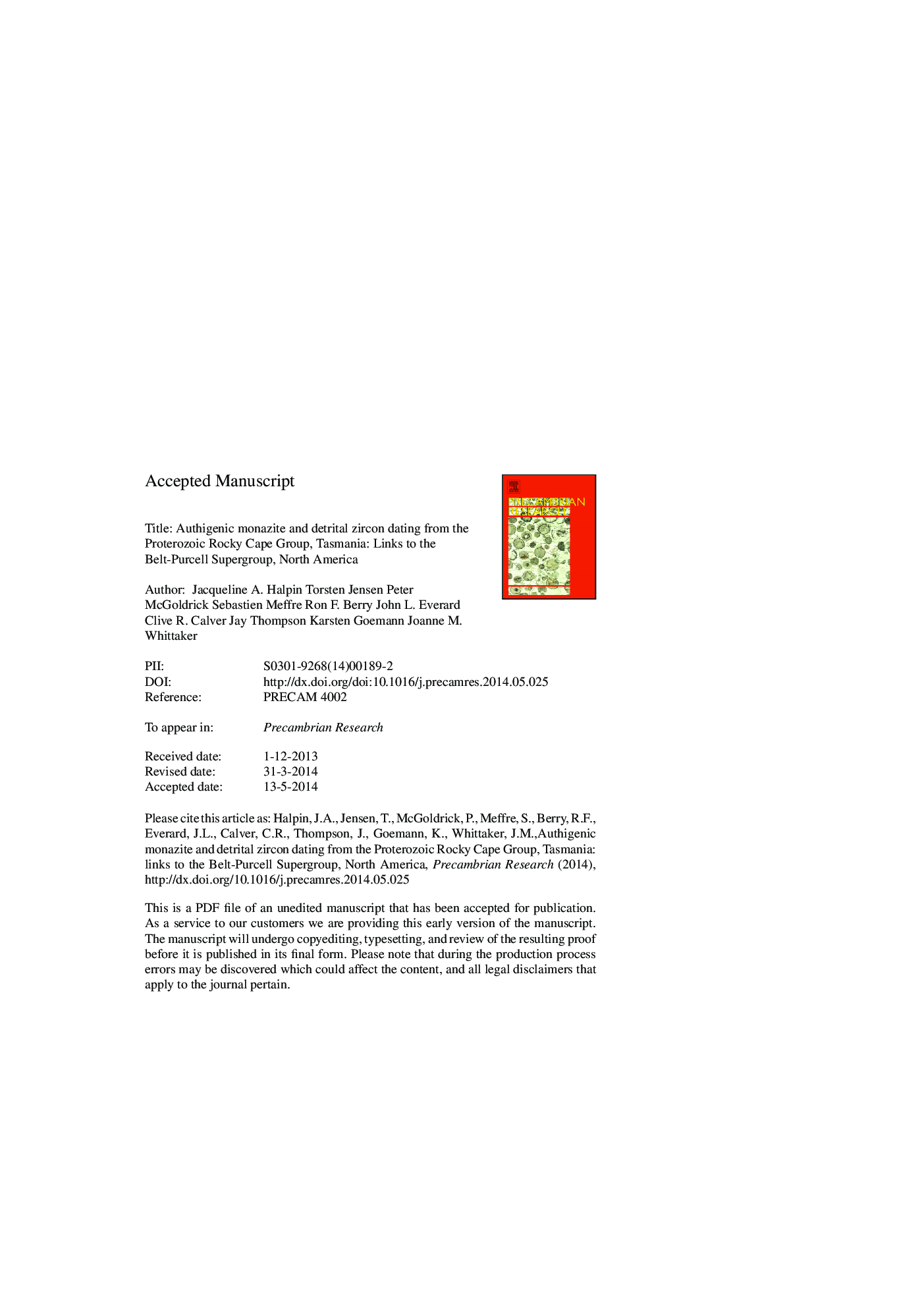| Article ID | Journal | Published Year | Pages | File Type |
|---|---|---|---|---|
| 6442267 | Precambrian Research | 2014 | 58 Pages |
Abstract
The Rocky Cape Group has a shared provenance with the higher-grade metasediments (Surprise Bay and Fraser formations) of nearby King Island; the newly derived depositional ages also overlap and support the correlation of these rock associations. On the basis of current datasets, there are no obvious correlations that can be made with Mesoproterozoic basins preserved in mainland Australia. Instead, an overlap in the timing of deposition, similarities in detrital zircon signatures and analogous depositional environment suggests the c. 1.45-1.37Â Ga upper Belt-Purcell Supergroup (Missoula and Lemhi groups) of western North America constitutes a plausible correlation with the Tasmanian Mesoproterozoic succession. If the (unexposed) Palaeoproterozoic basement of Tasmania correlates with the Transantarctic Mountains region of East Antarctica as previously proposed, we suggest that the overlying Mesoproterozoic sequences were deposited during rifting of the supercontinent Nuna, between proto-Australia (including the Mawson craton of Antarctica) and Laurentia as predicted by the most recent palaeogeographic reconstructions. Both the Tasmanian and western Laurentian packages were affected by episodic post-depositional fluid flow events between c. 1.35 and 1.05Â Ga, possible thermotectonic imprints of the subsequent assembly of Rodinia.
Keywords
Related Topics
Physical Sciences and Engineering
Earth and Planetary Sciences
Geochemistry and Petrology
Authors
Jacqueline A. Halpin, Torsten Jensen, Peter McGoldrick, Sebastien Meffre, Ron F. Berry, John L. Everard, Clive R. Calver, Jay Thompson, Karsten Goemann, Joanne M. Whittaker,
